The Art of Preservation: How to Care for Your Vintage Rug

A vintage rug is more than a decorative piece—it’s a fragment of history woven by skilled hands. Each Moroccan rug carries the rhythm of tradition: the geometric grace of a Beni Ourain, the vivid storytelling of a Boujaad, or the intricate symbolism of an Azilal. Preserving these handcrafted treasures means honoring the artisans, the landscapes, and the generations behind them.
Here’s how to care for your vintage Moroccan rug and keep its timeless spirit alive for years to come.
Table of Contents
Clean with Mindfulness
Every vintage Moroccan rug carries traces of the world it has lived in—fine desert dust, the scent of wool, the rhythm of footsteps that once crossed it. Regular cleaning is not just maintenance; it’s a gentle ritual of renewal that honors the life within its fibers.
Start by vacuuming softly, once a week or as needed, using low suction and avoiding the fringes. The goal is to lift away surface dust without disturbing the weave. For delicate rugs—especially older pieces—skip the vacuum’s brush altogether and instead shake the rug outdoors to release trapped dust.
This helps remove hidden particles that can dull the colors or weaken the wool over time.
In Morocco, rugs are often taken outside to breathe under the open sky—a practice that refreshes the fibers naturally. You can echo this tradition by occasionally airing your rug outdoors on a dry, breezy day (away from direct sunlight). The wool will regain its softness and a hint of its natural scent.
Rotate to Balance Light and Life
A Moroccan rug lives with your space—it adapts to the rhythm of your days, the path of the sun, and the flow of movement through your home. Over time, sunlight and footsteps can leave their gentle mark, softening certain areas while others remain untouched.
To preserve its harmony, rotate your rug every few months. This simple act helps balance light exposure and wear, ensuring that the fibers age evenly and the colors remain consistent. It’s a ritual of care that mirrors the mindfulness of the artisans who wove it—patiently turning their looms, line by line, to create symmetry and flow.
If your rug lies in a bright room, consider shifting its position with the seasons. Let each side enjoy both the warmth of sunlight and the calm of shade, just as Moroccan homes balance light through latticed windows and open courtyards.
Handle Spills with Care
Spills happen—it’s part of living with beauty. A drop of tea during a quiet afternoon, a splash of wine shared with friends, or a trace of olive oil from a lively meal.
The first rule is simple: act immediately. Blot—never rub—the spill with a clean, dry cloth to absorb as much liquid as possible. Rubbing can push the stain deeper into the wool and disturb the weave.
For most spills, mix a small amount of mild detergent or natural soap with cool water, and gently dab the affected area with a soft cloth. Avoid harsh chemicals, bleach, or strong cleaners—they can strip away the natural oils of the wool and alter the hand-dyed pigments that give Moroccan rugs their soul.
If the stain persists, it’s best to consult a professional cleaner familiar with handmade or antique rugs. The intricate weaves of Boujad, Azilal, or Taznakht pieces require experienced hands—just as they were created by them.
And sometimes, a faint trace remains—a small echo of daily life. That’s part of the charm. In Moroccan homes, rugs are not treated as fragile objects but as living companions that age gracefully with use. With mindful care, each thread continues to tell its story—vivid, warm, and authentically yours.
Deep Clean the Traditional Way
Even with regular care, a vintage Moroccan rug deserves a deeper clean every few years—a renewal that restores its softness and brings its colors back to life. But this should always be done with patience and respect for the craftsmanship woven into every fiber.
In Morocco, the traditional way is beautifully simple. Rugs are carried outside, hand-washed with natural soap and clear water, then laid to dry beneath the open sky. The sun, air, and time work together to refresh the wool—no machines, no chemicals, just nature’s rhythm.
If you’re far from the Atlas Mountains, you can honor this same spirit by choosing a professional rug cleaner who understands handmade and vintage textiles. Ask about their process—gentle hand washing, cold water, and natural drying are key. Avoid any service that relies on industrial cleaning or strong detergents, which can weaken fibers and fade natural dyes.
Between deep cleans, you can refresh your rug naturally by airing it outdoors on a breezy, dry day (avoiding direct sunlight). Wool is a living material—it breathes, absorbs, and releases moisture. Giving it time in the open air revives its natural lanolin and keeps the fibers supple.
A proper deep clean is more than maintenance—it’s a quiet act of preservation. A way to keep the artistry of Moroccan weaving alive, vibrant, and ready to share its warmth for generations.
Store with Breath and Care
There are times when a rug needs to rest—between seasons, during a move, or simply to make space for something new. Proper storage is essential to preserve the texture, color, and natural scent of a vintage Moroccan rug.
Begin with a thorough cleaning: the rug must be completely dry and free from dust before being stored. Then, roll it with the pile facing inward—never fold it. Folds can break fibers and leave permanent creases.
Wrap the rug in breathable cotton or muslin fabric to protect it from dust while allowing the wool to breathe. Avoid plastic coverings, which trap moisture and can lead to mildew or odors.
Store your rug in a cool, dry place away from direct sunlight to keep its natural dyes from fading. For added protection, place a few lavender sachets or cedar blocks inside the roll—traditional, natural ways to ward off moths and keep the wool fresh.
Storing your rug with care is more than a precaution—it’s a way of honoring its craftsmanship and ensuring it will continue to warm your home with its beauty for generations.
Protect from Moths and Pests
Wool rugs, especially vintage Moroccan pieces, are naturally rich in lanolin — a quality that gives them softness and durability, but also makes them attractive to moths if left unprotected. Keeping these small intruders away is essential to preserving your rug’s fibers and weave.
Start by ensuring your rug is always clean before storage or long periods of disuse. Moths are drawn not to the wool itself, but to the traces of dust, humidity, or organic matter trapped within it. A gentle cleaning and thorough airing will make your rug far less inviting to them.
Use natural repellents rather than harsh chemicals. Traditional Moroccan homes often rely on dried lavender, cedarwood, or cloves, tucked inside cotton sachets and placed near stored textiles. These natural scents deter moths while leaving a pleasant, subtle fragrance in the fibers.
If your rug is laid out year-round, vacuum both sides occasionally, including under furniture, to remove eggs or larvae that might hide unseen. During warmer months, you can also hang the rug outdoors on a dry, breezy day—the light and airflow discourage moths naturally.
For long-term peace of mind, consider using cedar blocks, moth traps, or essential oils (like lavender or eucalyptus) placed nearby—but never directly on the wool.
Protecting your rug from moths is an act of quiet vigilance. With regular care and a few natural safeguards, your Moroccan masterpiece will remain exactly as it should—alive with warmth, texture, and history.
Embrace the Patina of Time
In Moroccan craft traditions, time is not the enemy of beauty—it is its companion. Vintage rugs often display soft fading, slightly irregular edges, and gentle wear in places where footsteps have passed most often. These are not flaws; they are signatures of life, signs that the rug has been lived on, walked on, and loved.
Rather than striving for perfection, appreciate these signs as part of the rug’s story. Let the subtle fading deepen the colors in shadowed corners. Allow the mellowing of the pile to reveal the warmth in the wool. Celebrate asymmetry—it shows the rug was hand-woven by human hands, not machine-made.
When caring for your rug, aim to nurture its character rather than erase it. With every rotation, light filtering, careful cleaning, and mindful storage, you help preserve its authentic soul. Over the years, the patina becomes part of the charm—one that connects you not only with the object, but with the artisans, the place, and the moments it has witnessed.
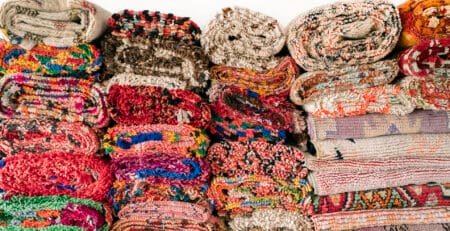



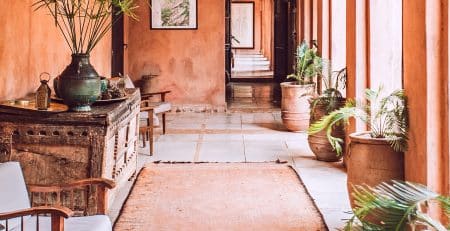

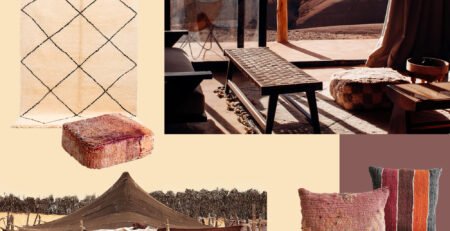
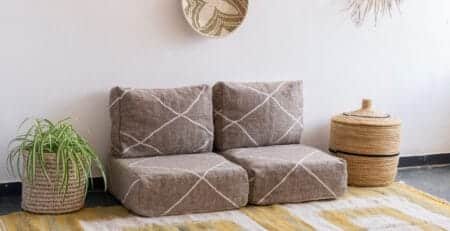
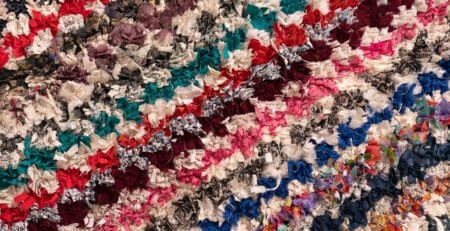


Leave a Reply
You must be logged in to post a comment.